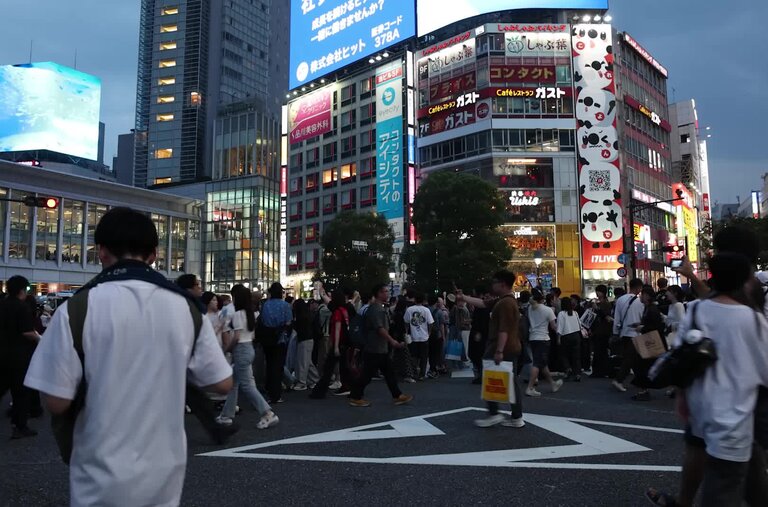Tokyo, renowned as one of the world’s most densely populated cities, has perfected the art of compact living.
During peak commuting hours, white-gloved attendants known as oshiya, or “pushers,” help squeeze passengers into crowded subway cars. Hotel rooms often measure only slightly larger than the beds they hold, while major intersections buzz with pedestrians, traffic, and vibrant electronic billboards.
As a photographer and journalist familiar with Tokyo’s bustling atmosphere, I sought to explore its quieter dimensions. I embarked on documenting tranquil gardens, serene cafes, airy atriums, and sacred shrines where residents not only escape the city’s clamor but also discover spaces for community, solitude, and reflection.
Hitoshi Abe, a Japanese architect and professor at the University of California, Los Angeles, highlighted how Japanese design excels at crafting environments that inspire calm. “Even a small garden the size of a tatami mat can evoke the essence of nature,” he explained. “Japanese design creates intimate spaces that connect you to something greater: a bonsai replicates a full-sized tree, and a tearoom with a single flower and the sound of boiling water can evoke the sensation of being immersed in nature.”
This aesthetic draws from the philosophy of shichu no sankyo — or “dwelling in the mountain inside the city” — which integrates the spirit of nature into urban settings.
Studies have shown that exposure to natural environments brings health benefits, and that minimalist, quiet spaces help alleviate stress. Prioritizing stillness and connection with nature remains a fundamental aspect of Japanese design, according to Mr. Abe.
Tokyo hosts thousands of Shinto shrines and Buddhist temples, many centuries old, that fulfill spiritual and ecological roles. These sites range from expansive locations like the 170-acre Meiji Shrine and its forest to intimate sanctuaries—small courtyards shaded by ancient trees tucked between city buildings.
When artist and yoga instructor Kenji Kureyama seeks respite, he visits Setagaya Hachiman Shrine in Tokyo’s Setagaya district. He describes green spaces in the city as refreshing oases that provide cooler air. “It’s like finding small deserts scattered with these green refuges,” he said.
Mr. Kureyama, 40, observes that more urban developments are now incorporating greenery. “It’s about harmonizing the city and our well-being with nature,” he remarked.
Public gardens and museum courtyards across Tokyo also offer peaceful escapes from the crowded streets. The Nezu Museum, located in the vibrant Aoyama district, is celebrated for its collection of traditional Japanese and East Asian art, its contemporary architecture by Kengo Kuma, and its tranquil garden with bamboo-lined paths and teahouses.
Once a quiet haven for local art enthusiasts, the museum has become a popular tourist destination. To preserve its serene atmosphere, staff encourage visitors to keep voices low and refrain from photography inside the galleries.
Certain venues in Tokyo—such as bookstores, reading rooms, and intimate listening bars—emphasize silence. The book cafe R-za Dokushokan, near a busy shopping area, offers a quiet refuge on its second floor. Patrons ascend a narrow stairwell to find a sign shaped like an arrow stating, “This is a place to spend time quietly. Talking is not allowed.”
Owner Taiki Watanabe, 55, who established the cafe in 2008, explained his intent: to provide a space where people can engage in silent dialogue with themselves. “Such conversations arise naturally in moments of stillness,” he said.
At Midori.so, a co-working space and gallery in Tokyo’s Nakameguro neighborhood, occupants may not experience the hush of a forest, but the building itself feels embraced by nature, as thick ivy envelops its exterior.
The previous owner, Tomomochi Suga, who lived there with his mother, became reclusive after her passing and allowed the ivy to grow unchecked, covering the structure.
When Midori.so’s founding member, Tomoji Oya, 42, and his associates sought to lease the space, they committed to fostering a creative community of young professionals.
The collective now comprises both Japanese and international members, each carefully interviewed before joining. “Good vibes only,” Mr. Oya said with a smile.
Despite the overwhelming crowds and constant activity of Tokyo’s streets and transit hubs, Mr. Abe believes the city’s brilliance lies in its balance—merging tradition with contemporary life and connecting residents to a greater whole. “It demonstrates how people can coexist peacefully even in the most intense environments,” he noted.


0 Comments
No comments yet. Be the first to comment!